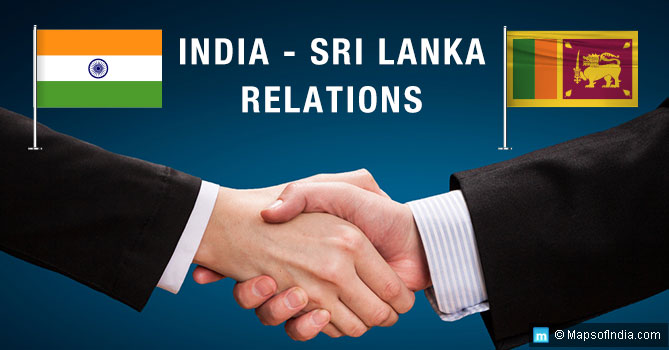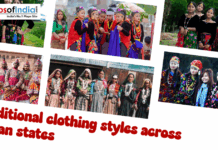India and Sri Lanka share a relationship that is more than 2,500 years old since the first point of contact, both nations have built a relation upon a legacy of religious, cultural, intellectual and linguistic interaction. Both the countries attained Independence from British colonial rule in successive years, while India gained in 1947, Sri Lanka or Ceylon as it was known at the time got independence in 1948.
In the first three decades since India and Sri Lanka gained independence both shared a mutual respect and cordial relations. The 1980s was a period when the relations soured between both the countries, with armed resurgences in Sri Lanka and India’s alleged involvement in training Lankan Tamil Tiger Eelam (LTTE), who were fighting for the rights of the oppressed Tamil population in the country. The growing angst among the Tamil population in India and an increasing number of refugees that flooded the country led India to be involved directly in the ongoing Sri Lanka civil war in the year 1987. India-Sri Lanka ties have improved in the recent years with high-level of diplomatic exchanges and signing of several agreements to give a positive momentum to the relationship.
The Sri Lankan civil war and deteriorating India-Sri Lanka Relations
The 1980s saw the civil war escalate on Sri Lankan soil with LTTE carrying out armed insurgences against the Sri Lankan government, fighting for the rights of minority Tamil population on the island nation. Sri Lankan government violated several human rights statutes in the process of exterminating the armed insurgencies that saw thousands of civilians, military personnel, and armed insurgents losing their lives.
The Indo-Sri Lanka Peace Accord
- The bilateral peace Agreement signed on July 1987, allowed India to look after the task of mediation, one of the most intricate part of international politics. India preferred a military impasse, as it would compel Sri Lankan Government and the Tamil militants to seek a political solution for the conflict.
- The Indian actors involved in the conflict, ignored leaders like A. Amirthalingam and, in turn, instigated the militants to be the sole representatives of the Sri Lankan Tamils.
- The Indian mediators were replaced frequently and that broke the consistency in the negotiation process. It was a shambolic failure on the part of Indian leaders as well as the 14 foreign policy experts deployed by the Indian government, as they failed to understand the cunning motives of Jayewardene, who used Indian military to disarm the LTTE by seeking military intervention.
- Sending the Indian Peace-Keeping Force (IPKF) was the most crucial point in India-Sri Lanka relations, which highlighted the hollowness of the 1987 Peace Accord between India and Sri Lanka and proved to be a major diplomatic failure on the part of the Indian Government.
- The Agreement was prepared in a great hurry with many impracticable provisions that instead of helping India’s cause deteriorated the situation between both the countries. Indian Government committed some grave mistakes on its part and the whole idea of intervention proved to be a big failure.
The end of civil war and stability between both nations
After nearly three-decades, the armed conflict between Sri Lankan forces and the LTTE finally came to an end in May 2009. India was always supportive of the Sri Lankan government’s right to act against the armed insurgents in the country. The Indian government conveyed its deepest concern at the plight of Tamil civilian population at every point. Emphasising on the rights and welfare of the Tamil population of Sri Lanka, Indian government always stood for these rights. India always reiterated the need for national reconciliation through a political settlement of the ethnic issue. India always persisted in favour of a political mediation of the conflict, which is acceptable to all communities within the framework of a united Sri Lanka and which is consistent with democracy, pluralism and respect for human rights.
Economic Ties
India and Sri Lanka had strong economic relations in the pre-colonial era, but during the nearly five centuries of colonial rule under the Portuguese, Dutch and British weakened the relations between both the countries. After both countries gained independence from the colonial rule, economic relations started to revive between India-Sri Lanka to a certain extent but due to the inward-looking policies that dominated the policy making in countries until the mid-1980s it was less significant. With the liberalisation of economies in the 1990s. India is the third largest export country for Sri Lanka, with exports to India averaged at 5218.24 USD Million from 1957 till 2018. It reached an all time high of 30541.44 USD Million in March of 2013 and reached all-time low of 59.01 USD Million in June 1958. Exports from India to Sri Lanka increased at 20.2 percent year-on-year basis to USD 28.86 billion in May, 2018. Exports to Sri Lanka from India averaged at 27.84 INR Billion from 2014 until 2017 in India, it reached a record high of 53.84 INR Billion in April, 2015, and a recorded a low of 0 INR Billion in April, 2014.






